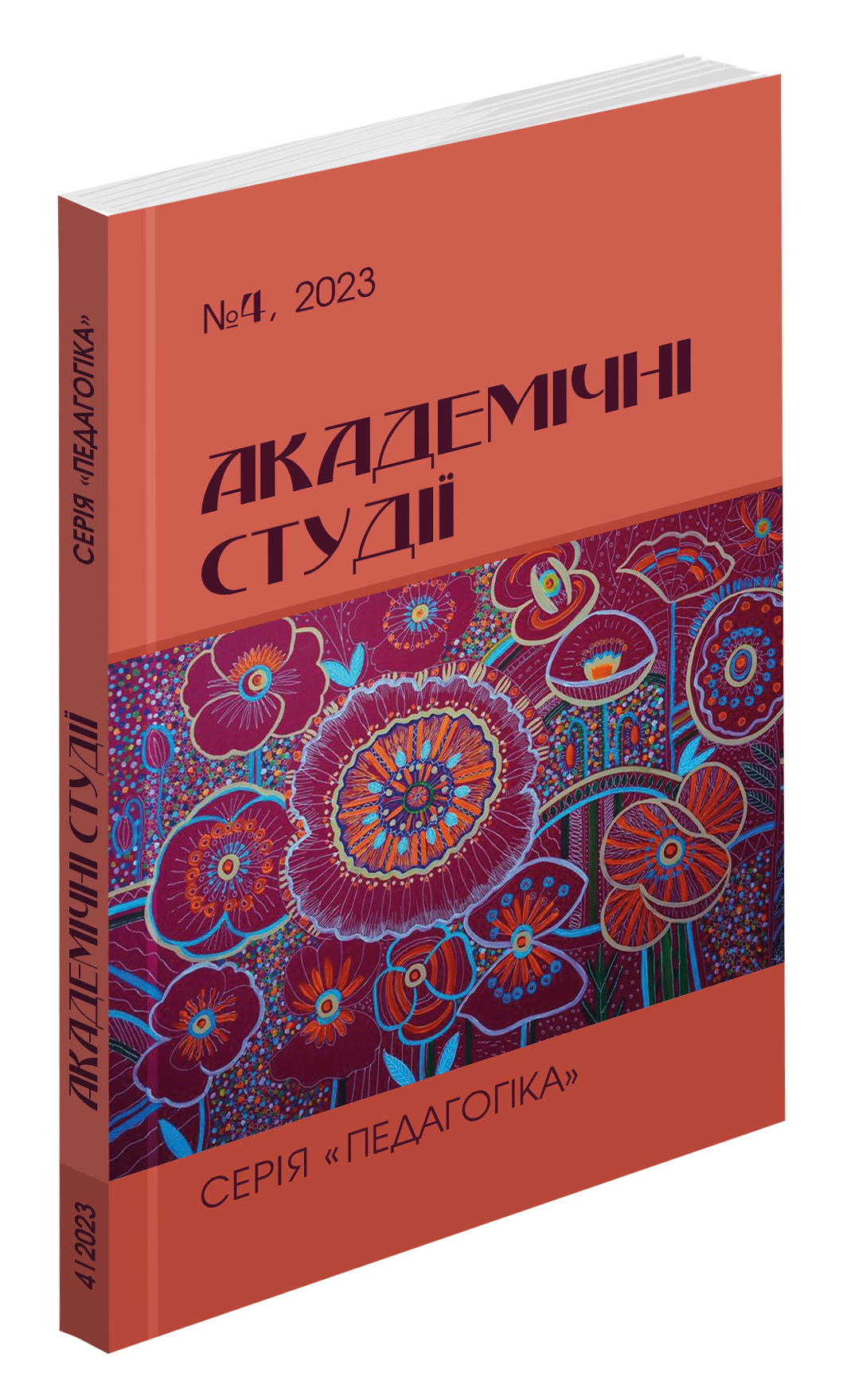Abstract
The massive and widespread use of digital technologies and social networks in everyday life contributes to the search for effective ways of their application in the educational process. This article examines the issue of learning the Ukrainian language (professionally) in the conditions of the digitalization of the modern world and the organization of the educational process using social networks, in particular the Telegram messenger, the main characteristics that show its effectiveness and open opportunities for the development of various forms of network interaction of all sub objects of the educational process. The article also highlights the possibilities of teaching on the media platform, its advantages and disadvantages, the readiness of students and teachers to include social networks in the educational process, their pedagogical applicability as a means of forming the language competence of nurses. In response to modern changes in education and compliance with the requirements of a new generation of students, the teacher is constantly searching for up-to-date didactic tools and technologies. The problem of reducing the cognitive activity of students of non-philology majors in language learning remains unsolved. This determines the relevance of the research conducted by the authors. Choosing the Telegram messenger as a methodical technique for stimulating cognitive activity, the authors rely on research into the sociopsychological characteristics of generation Z students, their interests and life strategies. The article pays special attention to the multifacetedness of social networks in education; the type of content and methods of presenting information in the Telegram messenger, educational language group are highlighted. The practical significance of the study lies in the reflection of the pedagogical experience of integrating the Telegram messenger into the educational process, as well as the possibility of using the Telegram messenger to stimulate the cognitive activity of students in the context of language disciplines.
References
Биков В., Спірін О., Пінчук О. Сучасні завдання цифрової трансформації освіти. Вісник кафедри ЮНЕСКО «Неперервна професійна освіта ХХІ століття». 2020. Вип. 1. С. 27–36. DOI: https://doi.org/10.35387/ucj.1(1).2020.27-36
Бойко С. А. «Мобільний додаток Telegram як інноваційний засіб активізації роботи студентів при вивченні
іноземної мови», Міжнародний науковий журнал «Інтернаука», т. 4, № 66 (1), С. 27–31, 2019. URL: https://www.internauka.com/uploads/public/15532023517160.pdf (дата звернення: 10.11.2023).
Гончарук В. Цифрова компетентність як складник професійної культури педагога. Актуальні питання
гуманітарних наук: міжвузівський збірник наукових праць молодих вчених Дрогобицького державного педагогічного університету імені Івана Франка / [редактори-упорядники М. Пантюк, А. Душний, І. Зимомря]. Дрогобич:
Видавничий дім «Гельветика». Вип. 41. Т. 1. С. 202–210.
Дика Н., Глазова О. Дистанційне навчання української мови: особливості, переваги та перспективи. Освітологічний дискурс. № 2. С. 205–220. URL: http://nbuv.gov.ua/UJRN/osdys_2021_2_16 (дата звернення: 11.11.2023).
Закон України «Про вищу освіту» [Електронний ресурс]. Режим доступу : http://zakon4.rada.gov.ua/laws/show/1556-18.
M. Z. Iqbal, H. I. Alradhi, A. A. Alhumaidi, K. H. Alshaikh, A. M. AlObaid, M. T. Alhashim, M. H. AlSheikh,
“Telegram as a Tool to Supplement Online Medical Education During COVID-19 Crisis”, Acta informatica medica,
(2), pp. 94-97, 2020. doi: 10.5455/aim.2020.28.94-97.
Kress G. Multimodality. A Social Semiotic Approach to Contemporary Communication. New York : Routledge, 2010. 236 p.
Лебедєва С. Л. Використання сучасних каналів онлайн комунікації в контексті процесу трансформації
навчання у ЗВО. Діалог культур у Європейському освітньому просторі: зб. матеріалів VII Міжнародної конф. Київ, 2022. С. 124–127.
Chomsky N. Aspects of the theory of syntax. Cambridge, Mass: M. I. T. Press, 1965. 251 p.
Hymes D. On Communicative Competence. Sociolinguistics. Harmondsworth: Penguin, 1972. P. 269–293.
Perrenoud P. Diez Nuevas Сompetencias para Enseñar. Barcelona : Graó, 2007. 168 p.
Prensky M. Digital Natives, Digital Immigrants Part 1. On the Horizon. 2001. Vol. 9, No 5. P. 1–5.
R. Singh, “AI and Chatbots in Education: What Does The Future Hold?”, May. 2018. URL: https://cutt.ly/dnFFC34. (дата звернення: 19.09.2023).
Stevenson M. P., Liu M. Learning a Language with Web 2.0: Exploring the Use of Social Networking Features
of Foreign Language Learning Websites. URL: https://www.researchgate.net/publication/267234941_Learning_a_
Language_with_Web_20_Exploring_the_Use_of_Social_Networking_Features_of_Foreign_Language_Learning_
Websites. (дата звернення: 10.11.2023).
